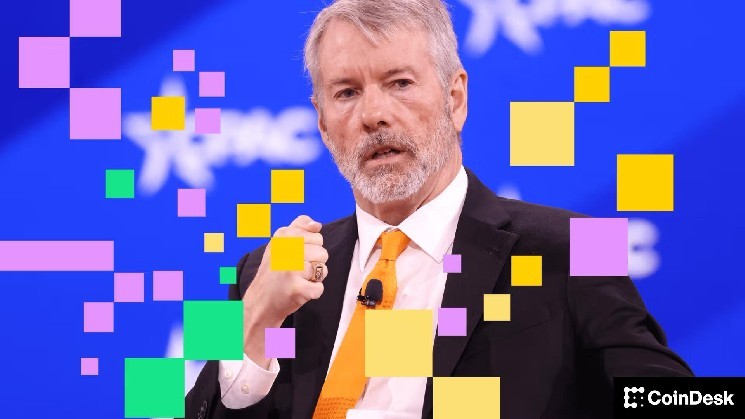
According to Michael Saylor, Executive Chairman of Strategy (MSTR), the recent period of stable prices for Bitcoin is indicative of its resilience rather than a sign of weakness.
During an episode of Natalie Brunell’s “Coin Stories” podcast released on Friday, Saylor explained that the market is currently experiencing a consolidation phase. He noted that long-term holders are gradually selling portions of their holdings while institutions gear up for larger investments. “If you take a step back and examine the one-year chart, Bitcoin has increased by 99%,” he stated. “The asset is showing reduced volatility — which is an encouraging indicator.”
Saylor characterized the present climate as one where early adopters who initially purchased Bitcoin at low prices are now liquidating small amounts to meet practical needs like housing or education expenses.
He compared this behavior to employees at rapidly growing startups cashing in stock options; it’s not about losing faith but rather a natural progression towards maturity. According to him, this trend will facilitate entry for corporations and large investment funds once volatility decreases.
Saylor dismissed worries regarding Bitcoin’s lack of cash flow making it less favorable than traditional investments, highlighting that numerous valuable assets—such as real estate, gold, and art—also do not generate income streams.
“Ideal currency does not rely on cash flows,” he remarked, noting that institutions rooted in decades-old equity and bond systems have been slow to adapt but will ultimately need to reconsider their strategies.
A key topic during their discussion was Strategy’s initiative aimed at transforming credit markets by utilizing Bitcoin as collateral. Saylor pointed out that traditional bonds suffer from being “yield-starved” and inadequately collateralized while instruments backed by Bitcoin can be designed to provide higher yields with lower risk profiles.
He introduced the company’s range of preferred-stock offerings — Strike, Strife, Stride, and Stretch — which aim to deliver yields up to 12%, all while being significantly over-collateralized with Bitcoin assets.
Saylor argued that through these products they are imbuing Bitcoin with characteristics akin to cash flow which allows it access into both credit and equity indices. “We’re providing cash flow attributes for Bitcoin,” he said emphasizing how this could enhance institutional acceptance and attract more capital into the ecosystem.
The conversation also touched upon why Strategy has yet been included in the S&P 500 despite its size and profitability levels.
Saylor mentioned that eligibility was only granted this year due to changes in accounting regulations; he noted Tesla also had delays beyond its initial eligibility quarter. He anticipates eventual inclusion as market familiarity with the bitcoin treasury model increases around late 2024.
Looking forward, Saylor likened emerging bitcoin treasury companies’ growth trajectory similar to what occurred during the formative years of petrochemicals—a time marked by diverse products, business models ,and fortunes amid chaotic yet transformative shifts over a decade span .
He forecasted an average annual appreciation rate near 29% for bitcoin over two decades ahead ,which would spur new types credit & equity instruments development .
In conclusion ,he expressed optimism regarding both bitcoin itself along societal progress overall asserting much negativity seen online stems from bots & paid promotions instead genuine discontentment .
“Bitcoin offers us peaceful equitable means settle differences ,”he asserted .”As more people adopt it peace fairness & equality shall proliferate.”